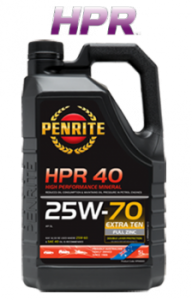 We take motor oil for granted.
We take motor oil for granted.
Sometimes, we don’t change it as often as we should. And when we do pour in a fresh batch of oil, we don’t always do our homework. Oh sure, we might have our favorite brands, and we always make sure to choose the proper viscosity for our needs (see our video on oil viscosity here).
But, what’s really in the oil you’re using?
By now, you probably know that oils are most commonly separated into conventional/mineral, synthetic, and semi-synthetic. Those terms refer to the base oils, which are either made at a refinery or man-made in a lab (synthetic). These base oils act as a starting point for oil manufacturers, who then add a variety of additives to help the oil achieve its desired function.
While the differences between the base oils (mineral vs. synthetic) are fairly common knowledge, there is some mystery to what the additives do. With the help of the experts at Penrite Oil Company, we’ve put together a glossary of additives to help you understand your options better the next time you’re shopping for motor oil or gear oil:
Detergents: Nearly any oil with an API (American Petroleum Institute) engine rating has a level of detergency. Detergents are usually metallic compounds that control deposits and keep engines clean. And depending on the product, they can clean up dirty engines.
Dispersants: These non-metallic, organic chemicals keep contaminants and by-products dispersed in the oil, helping to prevent deposits from forming. They are highly effective in controlling low temperature contaminants and can keep them so fine in suspension, they pass through the oil filter with the oil additives!
Extreme Pressure Additives: Oils rated at API GL-2 and up contain extreme pressure (EP) additives of some description. Typically found in gear oils, these additives tend to be sulphurphosphorus-based, although chlorine is also used. Some types are also found in compressor and hydraulic oils, and especially in slideway oils and chain lubricants.
Friction Modifiers: These reduce internal engine friction and vary in chemical nature depending on the type of oil. They are more common in low viscosity oils where fuel economy is important and are also effective anti-wear agents. Current technologies do not cause the same problems with bore glazing as in the past.
Oxidation Inhibitors: These inhibitors reduce the effects of oxygen on the oil, helping to reduce oil thickening, especially at high temperatures.
Rust and Corrosion Inhibitors: These inhibitors prevent rust and corrosion on metal surfaces from acids.
Anti-Wear Agents: These agents prevent wear due to seizure or scuffing of rubbing surfaces. They are normally zinc, phosphorus or other organo-metallic materials. ZDDP, commonly used in break-in oils for flat tappet cam applications, is one of the more common anti-wear agents.
Foam Depressants/Air Release Agents: These agents prevent foaming within the oil, thereby maintaining a lubrication film and the ability of the oil to be pumped at the required rate.
Pour Point Depressants: These depressants reduce the oil’s tendency to crystallize at low temperatures. This crystallization can hinder the oil’s ability to pour.
Viscosity Index Improvers (VII): These change the oil’s rate of thinning out the oil’s viscosity as temperatures increase. They are polymers that expand as temperature increases–much like a slowly uncoiling spring. VIIs change the Viscosity Index (VI) of a product–the higher this number is, the less the oil viscosity will change with temperature. There are many different types and those used in engine oils are very different to those in gear oils.

Very good information regarding synthetic, regular, viscosity etc. My question is do different brands of oil, really make a difference?
[…] about the additives inside your motor oil, and then listen to Speed explain why the proper balance is the key to long-term […]